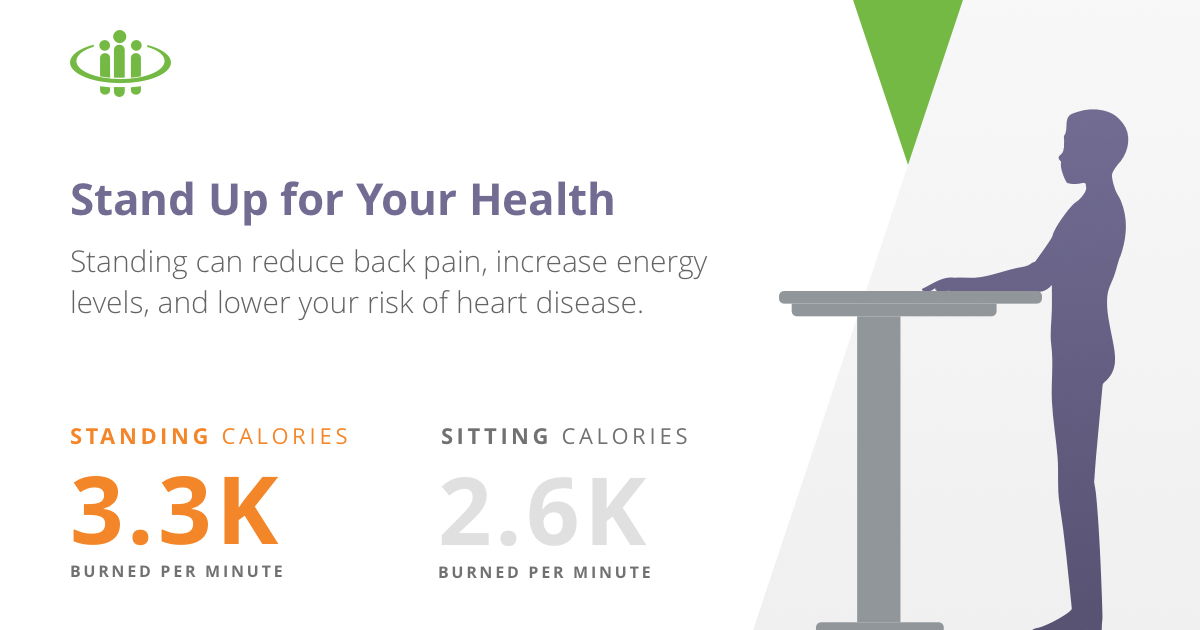Should You Take a Seat or Take a Stand?
Have you heard the buzz phrase, “Sitting is the new smoking”? The truth is, sitting might actually be worse for you than smoking. Sitting all day dramatically increases your risk of chronic diseases including heart disease, Type 2 diabetes, obesity, and cancer. Even worse, you can’t undo these risks by going to the gym every day. No matter how much you exercise, if you are sitting for prolonged periods of time, you will experience side effects.
Now for the good news. Standing regularly helps prevent chronic disease as well as promote a lower BMI, waist circumference and improved cholesterol levels. Our bodies burn 50 extra calories an hour standing than completely at rest. Additionally, standing has cognitive benefits. Skills like memory, concentration and problem solving are increased due to enhanced blood flow to the brain while standing.
No matter how much you exercise, if you are sitting for prolonged periods of time, you will experience side effects.
Because standing too much can lead to back problems, negatively affect your leg muscles, and contribute to varicose veins, it is important to strike a balance. It is generally recommended that during a typical workday, you aim to stand for 2-4 hours.
Optimize Your Work Space with Ergonomics
If you choose to use a standing desk, it is important to consider proper office ergonomics to make your standing workstation both comfortable and safe. Here are some tips to maximize the use of your standing workstation:
- Arms and elbows should be at 90 degrees and close to the body. Wrists should not be too much higher than the elbows.
- Adjust your computer monitor to a comfortable height for you, with the ideal position being the top of the monitor at or just below eye level. This will help prevent neck strain.
- Stand up straight and relax your shoulders. Imagine a string attached to the top of your head to the ceiling. Roll your shoulders down and away from your ears.
- From time to time, shift your weight from leg to leg, roll out your ankles, and stretch your legs. Try not to lock your knees. An anti-fatigue mat will help ease pressure on your joints.
- Wear comfy shoes! If you wear heels, keep a pair of sneakers or flats under your desk.
- Alternate sitting and standing. Find an interval of time that is comfortable for you. Start with switching off every half an hour or so.




